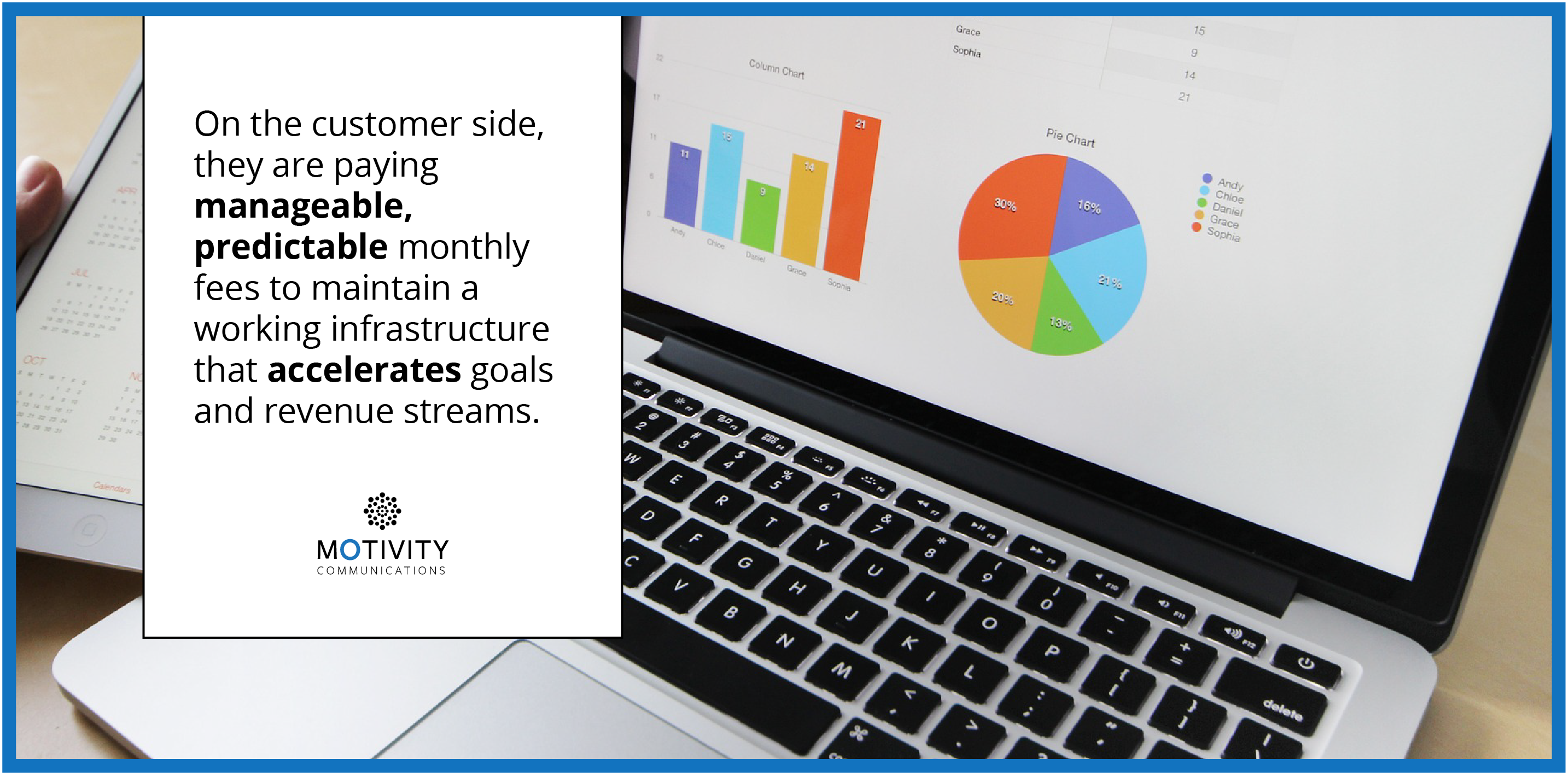As an MSP, you are always looking for ways to take things to the next level and make more. Not only this, but also provide your customers with a level of support that sets you above the competition.
A lot goes into what sets a great MSP apart from the rest, but the true distinction often lies in pricing.
Put simply, it makes sense that your goals as an MSP should align with those of your customers.
However, the pricing model of many IT services companies, the break/fix model, does not inherently support this idea.
Therein lies the opportunity for you as an MSP to rise above the competition.
Your goal should be to communicate the difference between break/fix and managed services pricing, and explain how the latter is a true investment in the success of their business.
No to mention, a way for you to make more in the long run.
Break/Fix Pricing Model
The break/fix pricing model is one that is common within the IT space.
At its bare bones, it means that the service you provide is reactive. When issues or downtime inevitably occur, that is where you profit.
It creates an environment in which a business increases its value to you the more their systems break down.
Question: if businesses knew that this was the case, would they choose this option?
Probably not.
Plus, with this model, finding a solution to the problem at hand does not just include the hard cost of the repairs.
It also leads to lost productivity, a soft cost that is a crucial component of efficiency and often overlooked by businesses in the long term.
Managed Services Pricing Model
Alternatively, the managed services pricing model, which has been gaining steam in the industry, can be lucrative for both the agent and the customer.
This mutually beneficial option makes success an incentive as opposed to a roadblock for MSPs to make more commission.
In simple terms, the managed service pricing model means that customers are paying a flat monthly rate for:
- Onsite and remote tech support
- 24/7 computer equipment monitoring
- Support and management
To some businesses, this might seem like a downgrade. How do they know that they’re not overpaying?
To start, they have unlimited access to faster repairs, without sucking up manpower and productivity from their team.
It also includes a higher level of investment on the MSP’s part into preventing issues in the first place.
At the end of the day, the managed services pricing model creates a higher level of ongoing support.
It is less time consuming for the agent than fixing problems that could have been avoided in the first place.
On the customer side, they are paying manageable, predictable monthly fees to maintain a working infrastructure that accelerates goals and revenue streams.
MSPs are no longer profiting off of a customer’s biggest business headaches. They instead become an invaluable part of their team.
Communicating To Customers
Now that you know the ins and outs of each pricing model, the next step is communicating this knowledge in a way that your prospective customer can grasp.
Essentially, you need to speak their language to motivate decision-making.
Many customers might be considering the switch, but are not confident in the transition.
Tackle this concern head on. You want them to understand that, with the managed services pricing model, they will be getting appropriate value for their money.
In fact, they will be getting more value than before, with a renewed focus on their top business goals.
While the phrase “your success is our success” is certainly something that piques their interest, you need to get more specific.
Any agent can make this loaded promise. Something that can put you ahead is proving how you are setup to truly invest in their success.
Let’s talk numbers.
If you subscribe to the break/fix model, how much does an incident cost a business?
The fact is, that business is not just paying for service repairs. They are also paying for hours of lost productivity for all employees whose efficiency was brought to a screeching halt.
However, with managed services pricing, incidents are covered by the monthly charge.
When an MSP knows that troubleshooting and downtime cost a business, and by extension themselves considerably, it is in their best interest to reduce issues as much as possible.
The result? Higher quality across the board.
With managed service pricing, everyone involved is ultimately more productive in the long run.
It is the preventative, proactive option.
Have questions on how you can make more selling telecom services with the support you need to stand out to customers? Call us or visit motivitycom.com.




